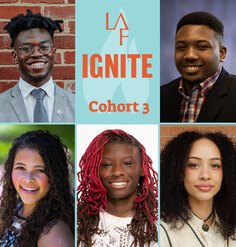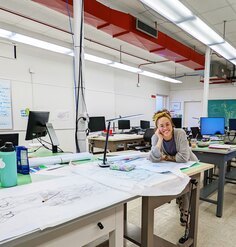Olmsted Scholar Feature: Case Studies in Multifunctional Infrastructure
By Zachary Barker, 2013 National Olmsted Scholar Finalist
There are few places in the world where infrastructure is more vital to human existence than in the Netherlands. The country sits at the northwest corner of the Great European Plain, and almost two-thirds of the country is at or below sea level. Over centuries, controlling water along rivers and the North Sea have allowed the Dutch to methodically reclaim land, first for farming and later for settlement. Dikes, levees, dams and other infrastructure have become fundamental parts of the Dutch landscape.
Amsterdam, as the urban core of the Netherlands, offers several different transit typologies, including elevated train tracks, underground metro, at-grade trams, multi-modal streets, and urban highways. This infrastructure has had a drastic impact on its surroundings. I traveled to Amsterdam in the fall of my senior year and spent three months documenting the benefits and complexities of three case study locations that reflect a synergistic approach to landscape, infrastructure, and civic space. The case studies included a hybrid office space, a linear park, and an intricate stormwater management system.
Tussen de Bogen, the hybrid office space, translates to “Between the Arches” in English. The translation is quite literal, as the site is located under the arches of an elevated rail corridor on the northwest side of Amsterdam. Approximately 250,000 people a day travel over the offices below on their way to or from Centraal Station. The site exemplifies how transit infrastructure can contribute to the densification of an urban environment instead of dispersing density, the usual scenario.
Churchill-laan, the linear park case study, illustrates how transit infrastructure can create public space in a dense and historic urban environment. The site is surrounded by transportation infrastructure on all sides but still manages to be a highly utilized public space.
The intricate stormwater management case study is located in Rietlandpark, a submerged tram station. Rietlandpark Station is designed to decentralize stormwater management issues by holding excess water under its platforms. The station is an example of how landscape infrastructure can abate stress on traditional infrastructure systems.
From the three case studies, I came to understand and appreciate the value that flexibility, decentralization, and multidimensionality can bring to an infrastructure project. These Dutch sites are in stark contrast to many American infrastructure projects of the mid- to late 20th Century that were engineered primarily to serve vehicles. The trend for contemporary landscape infrastructure is to become decentralized and multimodal. Multifunctional infrastructure conserves land, shares the financial load of its development, restores damaged natural ecologies, reinforces healthy transit options, and provides public access to vital open space. I think that landscape architects are uniquely poised to expand this trend because the infrastructure challenges of today call for sophisticated systems thinking in which landscape architects are trained and tested.
Zachary Barker received a BLA from The State University of New York College of Environmental Science and Forestry in May, graduating with honors. His thesis Dutchscape: Analyzing Landscape Infrastructure in Amsterdam, The Netherlands was selected as the university-wide Honors Thesis Prize winner for 2013. Zach is working as a landscape designer at LRSLAstudio in Philadelphia.











